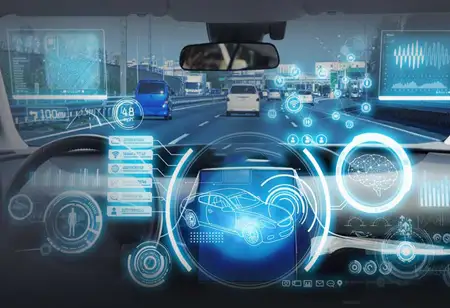THANK YOU FOR SUBSCRIBING
THANK YOU FOR SUBSCRIBING
Be first to read the latest tech news, Industry Leader's Insights, and CIO interviews of medium and large enterprises exclusively from Auto Tech Outlook

By
Auto Tech Outlook | Wednesday, October 25, 2023
Stay ahead of the industry with exclusive feature stories on the top companies, expert insights and the latest news delivered straight to your inbox. Subscribe today.
Striking a balance between technological advancement and safety imperatives necessitates thorough testing, simulation, and comprehensive regulation formulation.
FREMONT, CA: The automotive industry stands at the forefront of innovation. These advancements promise to reshape how companies perceive and interact with transportation, from self-driving cars to connected vehicles. Amidst this wave of progress, the importance of security and safety in the automotive sector cannot be overstated. As vehicles increasingly integrate with digital systems, safeguarding these advancements against potential threats becomes essential. Modern vehicles have many sensors, cameras, and communication modules that enable real-time data exchange, remote diagnostics, and even autonomous driving.
The convergence of automotive engineering and digital technology has ushered in better connectivity. Malicious actors can exploit vulnerabilities in a vehicle's software, potentially leading to unauthorized access, data breaches, or even manipulation of critical functions. The potential consequences of such violations are dire, ranging from compromised privacy and stolen personal information to physical harm and loss of life. The need to implement robust cybersecurity measures has emerged as a critical imperative. The automotive industry must adopt a proactive approach to cybersecurity. Integration of secure coding practices, regular software updates, and rigorous testing procedures throughout a vehicle's lifecycle is essential.
Collaborations between automakers, technology companies, and cybersecurity experts can facilitate identifying and mitigating vulnerabilities. The establishment of industry-wide standards and regulations can ensure consistent security across all vehicles, irrespective of their make or model. Ensuring the safety of occupants and pedestrians remains a paramount consideration in automotive innovation. While vehicular accidents have long been a concern, emerging technologies have introduced novel dimensions to the safety discourse. For instance, the development of autonomous vehicles raises questions about liability in accidents involving self-driving cars.
The overreliance on these systems or the misconception of the capabilities can lead to complacency among drivers, potentially compromising safety. Educating drivers and manufacturers about the capabilities and limitations of these technologies is pivotal in ensuring their optimal use. The imperative of security extends beyond the vehicle itself. The increasing integration of vehicles with smart infrastructure promises more innovative traffic management and reduced congestion. The benefits come hand in hand with concerns about data privacy, potential surveillance, and vulnerabilities that malicious actors could exploit.
The automotive industry is undergoing a transformational shift fueled by technological innovations that promise to reshape transportation. The critical importance of security and safety must be noticed. Cybersecurity vulnerabilities can have far-reaching consequences, from compromised personal information to life-threatening situations. The fusion of technology and safety imperatives requires vigilant testing, regulation, and education to ensure the optimal deployment of advanced systems. The automotive industry must ensure the security and responsibility of pioneering safe and secure innovations.
 Copyright © 2025 AutoTech Outlook. All Rights Reserved | Privacy Policy | Subscribe | Sitemap | About us | Feedback Policy | Editorial Policy
Copyright © 2025 AutoTech Outlook. All Rights Reserved | Privacy Policy | Subscribe | Sitemap | About us | Feedback Policy | Editorial Policy 



